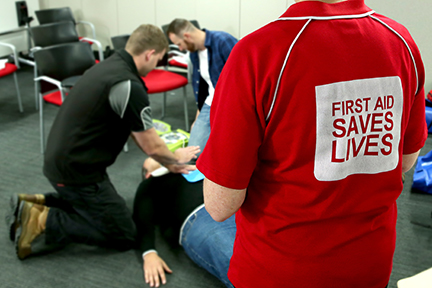
Technology has changed almost every facet of contemporary life, including communication, employment, and education. Training in emergency response is one area where technology is having a significant influence. Digital tools, applications, and simulations are being used to improve first aid abilities, which were previously solely taught via classroom teaching and practical demonstrations. As a result of this growth, responders are becoming more intelligent, self-assured, and equipped to act swiftly in life-threatening circumstances.
Why Technology Is Important For Teaching First Aid
Emergencies are not predictable. Rapid and well-informed reactions may save lives in situations including sports injuries, industrial accidents, or sudden cardiac arrest. Although conventional training techniques have been successful for many years, technology adds a new dimension of accessibility, engagement, and retention. Combining online learning with live instruction gives students a better grasp of methods and the self-assurance to use them when it counts most.
A person undergoing training in first aid Tweed today, for instance, may watch augmented reality (AR) simulations that walk them through the process of doing cardiopulmonary resuscitation (CPR) or use a smartphone app that reviews important skills via interactive tests. These resources not only enhance learning but also guarantee that information is retained long after classes are over.
First Aid In The Digital Classroom
Numerous training companies have modified their approaches to include online learning resources. Digital platforms that include interactive graphics, educational films, and real-time progress monitoring have replaced printed manuals as the primary means of training for participants. Students may go over the content at their own leisure using this method, which is very helpful for working parents or professionals.
The mix of online instruction and hands-on workshops in a First Aid Course Tweed guarantees that students comprehend both the theory and practical application. Prior to practicing in-person, learners may study methods like shock awareness or wound treatment online, which makes in-class sessions more effective and interesting.
Training In CPR And Intelligent Feedback Systems
Cardiopulmonary resuscitation is one of the most important first aid procedures (CPR). In the case of cardiac arrest, a person’s odds of survival may be increased or even tripled with the proper use of an automated external defibrillator (AED) and the capacity to do chest compressions. Today, sophisticated mannequins and feedback devices are being used to improve CPR training.
A modern CPR course Tweed could include teaching mannequins with sensors that evaluate hand placement, compression depth, and pace. Real-time feedback is provided to learners via displays or mobile applications, enabling them to quickly fix errors. Responders are guaranteed to be not just knowledgeable about CPR but also able to carry it out successfully under duress thanks to our data-driven method, which increases accuracy and confidence.
Increasing Community Preparedness
Community safety is one of the biggest advantages of tech-driven first aid training. Participation is anticipated to increase as training becomes more approachable and interesting. By providing chances for continuous refresher training, remote learning, and flexible scheduling, digital platforms reduce entrance barriers.
For instance, if a community supports its citizens in completing first aid training with online assistance, more people would probably feel competent to react in an emergency. This general preparedness eventually builds a more resilient and robust community where life can be saved before paramedics ever show up.
The Advantage Of Professionalism
Professionals working in childcare, elder care, education, fitness, or hospitality often need to be certified in first aid. Candidates who not only possess qualifications but also exhibit confidence in their ability to use them are valued by employers more and more. Taking a First Aid Course Tweed that uses technology may help job seekers by demonstrating that they have received training using the most up-to-date and efficient equipment.
Ongoing tech-driven refresher classes may provide existing staff members with opportunity for advancement and leadership. Employers also gain from having a staff that is prepared and safety-conscious, since this lowers risks and increases adherence to safety regulations.
Conclusion
Technology is improving, not replacing, conventional first aid training. Learners become wiser, more competent responders by integrating in-person practice with digital resources like virtual reality, augmented reality, smart mannequins, and mobile applications. Whether completing first aid training for personal development, taking a first aid course in Tweed for professional needs, or progressing through a CPR course in Tweed, technology guarantees that the skills acquired are useful, remembered, and instantly relevant.




